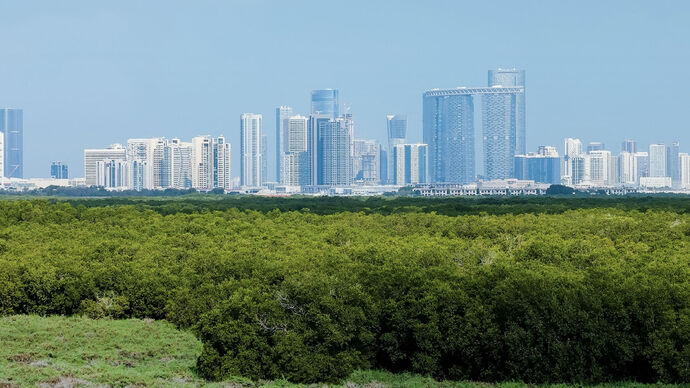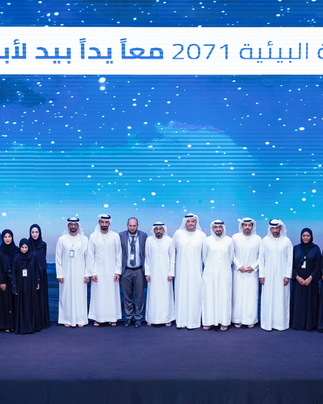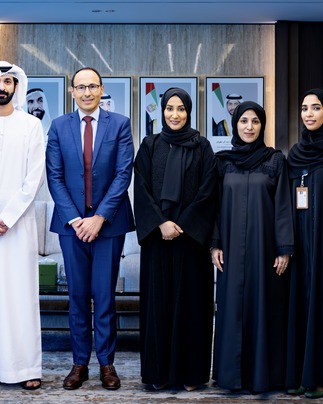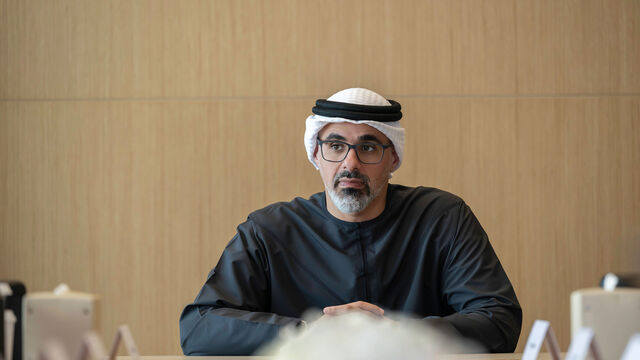Environment Agency – Abu Dhabi (EAD) has launched a self-reporting programme to standardise environmental monitoring and reporting requirements according to the potential impact of various sectors in Abu Dhabi. The programme aims to build a comprehensive and unified environmental database to identify the sources, quantities and components of emissions and discharges to the environment.
The new programme will support the UAE’s strategic climate neutrality initiative of Net Zero by 2050 and the Abu Dhabi Climate Change Strategy, which was launched by EAD in July 2023, by protecting the environment and optimising ambient monitoring systems. It will also assist in establishing priorities for inspection and assessing facilities’ environmental performance, while reducing any environmental risks associated with improper operating conditions. Self-reporting requirements and environmental monitoring procedures have been identified for 45 sectors in Abu Dhabi based on expected pollutants from the sectors' main operations.
The programme consists of organisational and technical measures and is financed by facility operators which aim to standardise the environmental monitoring and reporting requirements across the different sectors in the emirate that meets best international practices. This will facilitate the monitoring and reporting process and ensures collection and management of valuable environmental data. Reporting entities will keep records of the monitoring data and provide periodic reports to the competent authorities in a duly aggregate form.
The data will help determine the facility’s compliance with applicable laws and regulations and assess the efficiency of applied mitigations measures in eliminating or reducing environmental impacts. Data analysis will also provide the means to assess the cumulative impacts of projects and facilities across the emirate, encourage academic research projects, and support in decision making processes.
Faisal Hammadi, Executive Director of the Environmental Quality Sector at EAD, said: “The self-reporting programme will allow us to collect relevant and valuable environmental information about the regulated community in order to understand the significance of the residual environmental impacts on the emirate of Abu Dhabi. It will also provide us with valuable environmental data about what can be used to identify major environmental concerns and, following this, guide the development of required policies and regulatory instruments to eliminate or mitigate those concerns.
“There are economic benefits too, such as helping to identify and reduce environment-related costs and minimise environmental liabilities, providing indications to where cost-savings are possible and avoiding unnecessary expenses for irrelevant parameters or excess monitoring requirements. It will also facilitate investment across the industrial sectors by providing clear monitoring requirements. On a social level the programme will improve Abu Dhabi emirate’s reputation as a leading government in fostering sustainable development, creating employment opportunities and helping citizens to take individual decisions that affect not only their health but also economic well-being.
“The programme will enhance the environmental compliance of facilities and projects, leading to the implementation of best environmental practices to ensure that all emissions and discharges are within allowable limits. Furthermore, the data will help us identify major environmental concerns in the emirate. This will assist regulators in focusing on the development of policies and regulatory instruments to address those concerns, leading to an overall improvement of the environment.”
The programme is applicable to those in the regulated community such as industrial facilities, commercial facilities and development projects. All facilities holding an environmental permit are required to submit their annual monitoring reports according to the requirements set in the self-reporting programme.
The design of the self-reporting programme took into consideration facilities’ different activities depending on the type of technology used, production capacity or location. The programme also provides different monitoring approaches for facilities and projects depending on those factors. Monitoring requirements depend on the embedded environmental risk, hence facilities with lower risks will have lower requirements, which will ensure minimal cost implications. Regular monitoring of facility and project operations may lead to them finding ways to reduce costs associated with meeting standards and regulations by implementing new processes or adopting new technologies.
The elements monitored are: air emissions, discharges to marine and land, soil and groundwater contamination, waste and hazardous material management, operational parameters such as energy, water, and production capacity, among many more. Most importantly, it measures environmental performance such as contributing to achieving Net Zero by 2050.
Benchmarking for the programme was done on a local, regional and global scale, as per the sector under study, and includes: several countries is the region, Canada, the European Union, the United States and the United Kingdom.
The agency has developed a technical guidance document that provides clear instructions on EAD monitoring and reporting requirements. EAD is also currently working on developing a training programme to educate the regulated community on the new requirements.











